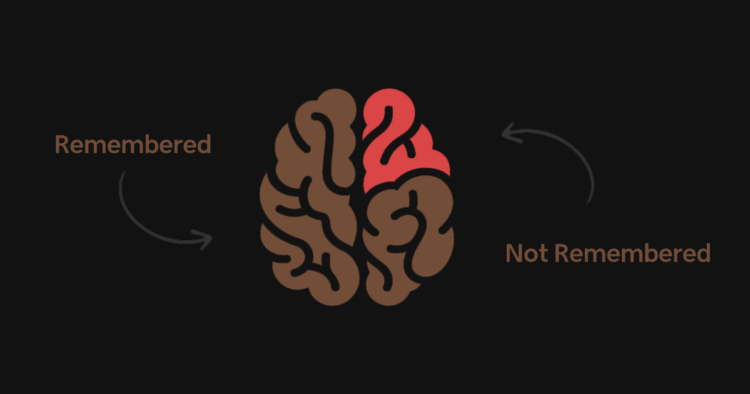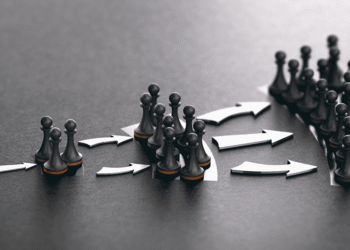In the bustling cafés of 1920s Vienna, Soviet psychologist Bluma Zeigarnik made a fascinating observation: waiters could remember complex, unpaid orders with remarkable accuracy, yet once the bills were settled, these details quickly faded from their minds. This observation led to the discovery of what we now know as the Zeigarnik Effect – a cognitive bias that explains why unfinished tasks dominate our memory and attention more than completed ones.
Understanding the Zeigarnik Effect
At its core, the Zeigarnik Effect states that people remember uncompleted or interrupted tasks better than completed ones. This psychological principle creates a cognitive tension that persists until the task reaches closure. It’s the same mechanism that explains why cliffhangers in TV shows are so effective, or why you might find yourself thinking about that one unfinished project more than all your completed ones combined.
The Science Behind the Effect
Research has shown that when we leave tasks unfinished, our brain creates a “task tension” – a state of psychological discomfort that maintains the information in our working memory. This tension serves as a mental placeholder, keeping the unfinished business at the forefront of our consciousness until we can return to it and complete it.
Strategic Applications in Modern Marketing
1. Product Launch Campaigns
Modern brands have mastered the art of the prolonged product launch. Take Apple’s iconic product releases: weeks before each launch, they release carefully crafted teasers, creating an information gap that consumers desperately want to fill. This strategic use of the Zeigarnik Effect builds anticipation and ensures their target audience remains engaged throughout the entire launch cycle.
2. Content Marketing and Storytelling
The most effective content strategies don’t just deliver information – they create narrative loops that keep audiences coming back for more. Consider how:
– Newsletter sequences tease upcoming content
– Blog series build upon previous installations
– Social media stories develop over multiple posts
– Podcast episodes end with previews of next week’s content
3. E-commerce and User Experience
Leading e-commerce platforms leverage this effect through:
– Progress bars in checkout processes
– Wishlists and saved items
– Abandoned cart reminders
– Loyalty programs with visible milestones
4. Social Media Marketing
Platforms like Instagram and TikTok have built their entire ecosystems around the Zeigarnik Effect. Stories that connect across multiple posts, carousel posts that require swiping, and series-based content all capitalize on our need for completion.
Implementation Best Practices
1. Create Strategic Gaps
The key is to create intentional information gaps that your audience wants to fill. However, these gaps should be:
– Meaningful enough to create interest
– Not so large that they create frustration
– Clearly leading to an eventual resolution
2. Maintain Balance
While the Zeigarnik Effect is powerful, it’s crucial to strike the right balance:
– Too many open loops can overwhelm customers
– Too few might fail to maintain engagement
– Each incomplete sequence should have a clear path to resolution
3. Provide Value at Every Step
Even in incomplete sequences, each interaction should:
– Deliver standalone value
– Build anticipation for what’s next
– Maintain quality and relevance
Real-World Success Stories
Netflix’s Autoplay Feature
Netflix’s automatic episode progression isn’t just convenient – it’s psychologically strategic. By starting the next episode before viewers have fully processed the end of the current one, they create an open loop that viewers feel compelled to close.
LinkedIn’s Profile Completion Bar
LinkedIn masterfully uses the Zeigarnik Effect through their profile completion percentage indicator. Users naturally want to achieve 100% completion, driving them to add more information and engage more deeply with the platform.
Common Pitfalls to Avoid
1. Don’t create artificial suspense without substance
2. Avoid leaving too many loops open simultaneously
3. Never sacrifice user experience for psychological manipulation
4. Ensure each “incomplete” stage provides value
The Future of Zeigarnik in Digital Marketing
As marketing continues to evolve, we’re seeing new applications of the Zeigarnik Effect in:
- Virtual and augmented reality experiences
- AI-driven personalized content sequences
- Interactive advertising campaigns
- Cross-platform narrative marketing
Over to You
How are you using psychological principles in your marketing strategy? Have you noticed the Zeigarnik Effect at work in your campaigns? Share your experiences in the comments below or tag us in your social posts about creative marketing psychology applications.











